I'm Convinced Every Garden Should Have a Sculpture — Here's How to Design the Right One Into Your Space
Nothing brings a more romantic, dramatic, and elegant feel to your garden design than a well-placed garden sculpture — but as designers explain, there's an art to it


A room without any art is like an outfit without any accessories, it just feels incomplete. And while this opinion has been widely accepted when it comes to interior design, we still seem to be slacking on our outdoor areas.
Garden sculptures are one of the most elegant, luxe-feeling additions to any outdoor space. Even in the smallest of gardens, a well-positioned, eye-catching piece of art can instantly transform your pokey garden into a Mediterranean dreamland. At the recent Chelsea Flower Show, striking outdoor sculptures were one of the most significant garden trends that I spotted, nestled in amongst shrubbery or standing proud in the central spot, commanding the attention of any passers-by.
"There's an enormous love for gardens in this country, and I think it's because they are a natural extension of the home. We love art in our lives; it shows us something out of the ordinary, and it can take us somewhere else. And sculptures, when located in the right place, can bring a focal point to your garden," explains outdoor sculptor Paul Vanstone.
While we're just catching on to this trend, the experts have known the importance of garden sculptures for quite some time, and now they're ready to let us in on it. From the best materials to look for, to the right way to integrate them into your garden design, we've asked all the most important questions for getting us started on our garden art journey.
Paul Vanstone studied sculpture at Central St. Martins School of Art before completing an MFA in sculpture at the Royal College of Art. Following his graduation Vanstone worked in Italy at the traditional marble carving studios near the famous Carrera quarries. On his return to the UK, Vanstone became an assistant to the leading British sculptor, Anish Kapoor. Since then Paul has shown his work at a number of major galleries in London, including the British Museum and the Victoria and Albert Museum, as well as galleries and sculpture gardens throughout the UK.
Why Add a Sculpture to Your Garden?
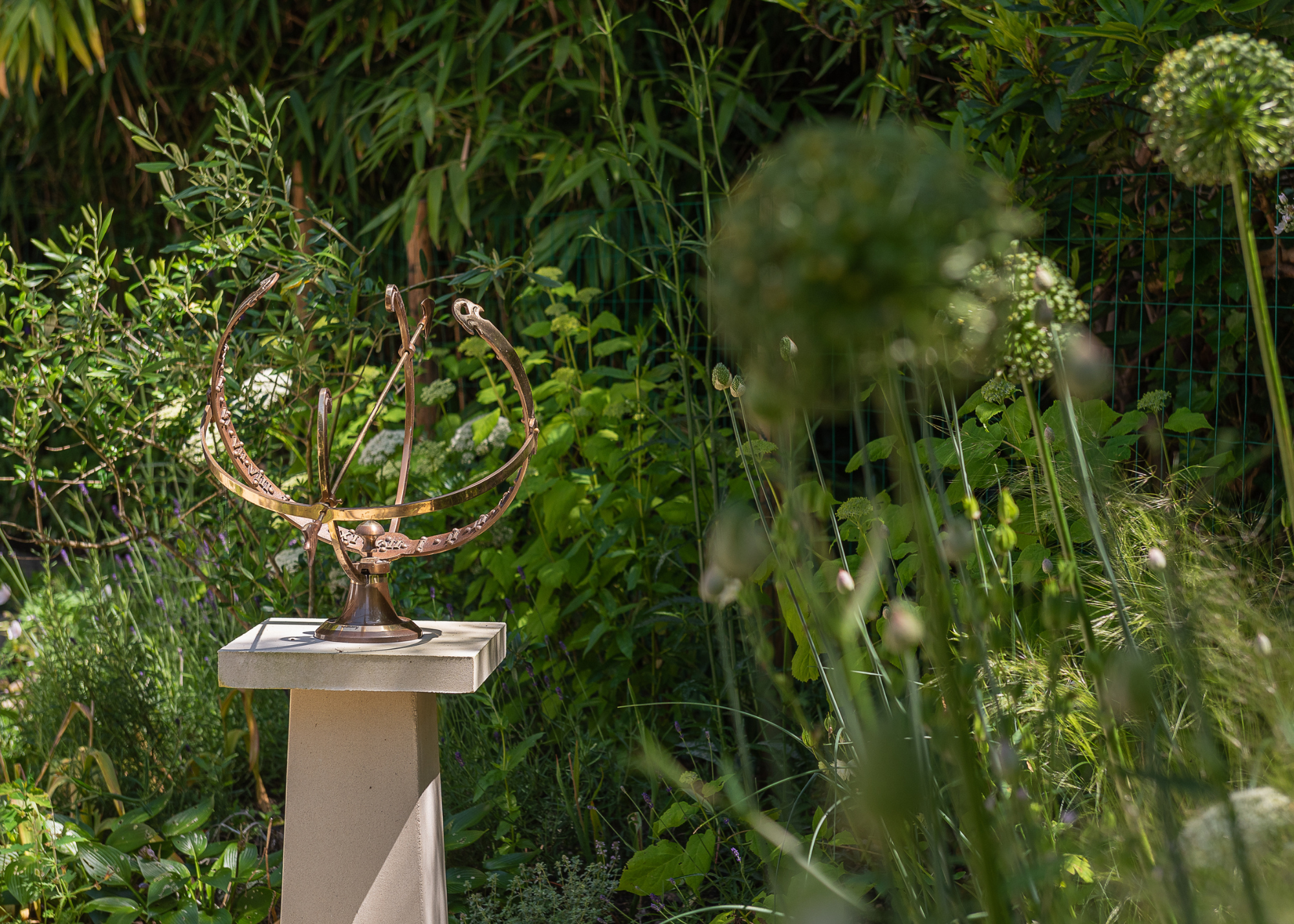
Choose a sculpture that feels consistent with the design of your home, to bring your interior design style outside.
"Whether bold or subtle, sculpture adds structure and heightens the overall design narrative," explains Shelley Landale from Karen McClure Garden Design.
For a modern garden with depth and dimensionality in its design, a sculpture can be a helpful tool. They can act as a visual guide, helping you set the overarching feel of your outdoor area.
Sculptor Katrien Van der Schueren explains, "A sculpture can add dimension, direction, and soul to a garden. It serves as a three-dimensional focal point, drawing the eye and creating a strong visual anchor."
The Livingetc newsletters are your inside source for what’s shaping interiors now - and what’s next. Discover trend forecasts, smart style ideas, and curated shopping inspiration that brings design to life. Subscribe today and stay ahead of the curve.
While a dramatically sculptural tree can make a beautiful, natural focal point, its effectiveness is determined by the season, and your garden can often feel slightly lacklustre come the winter months. A sculpture, however, will maintain the same constant beauty throughout the year.
"Sculpture brings a layer of artistry to the garden, creating a visual anchor, and a focal point, in particular, a statement piece will add to the year-round interest, especially when the majority of planting fades in winter," says Shelley.
It also brings a more personal touch to your landscape design. Inside your home, the furniture and interior design style of your space acts as a reflection of your personality and identity, something that can often feel absent in garden designs.
"We particularly love how the process of choosing a piece can reflect the client’s personal style and character — it becomes a unique and meaningful addition to the space and helps tell a story or evoke an emotion within the landscape," Shelley continues.
"Sculpture introduces a layer of interaction within the space, offering a point of engagement beyond the natural elements," Katrien says, "while the rest of the garden is shaped by nature, sculpture introduces a human element — expressive and intentional. It reflects the personality of the people who live there and tells something of their story."
Los Angeles-based sculptural artist Katrien van der Schueren pushes the boundaries of the materials she works in to transform masculine materials into feminine forms. Using materials such as World Tree wood, bio-resin, hemp fabric, plaster, ceramics, and Liquid Metal, Katrien's process is thoughtful, layered and dynamic.
How to Design a Garden With a Sculpture
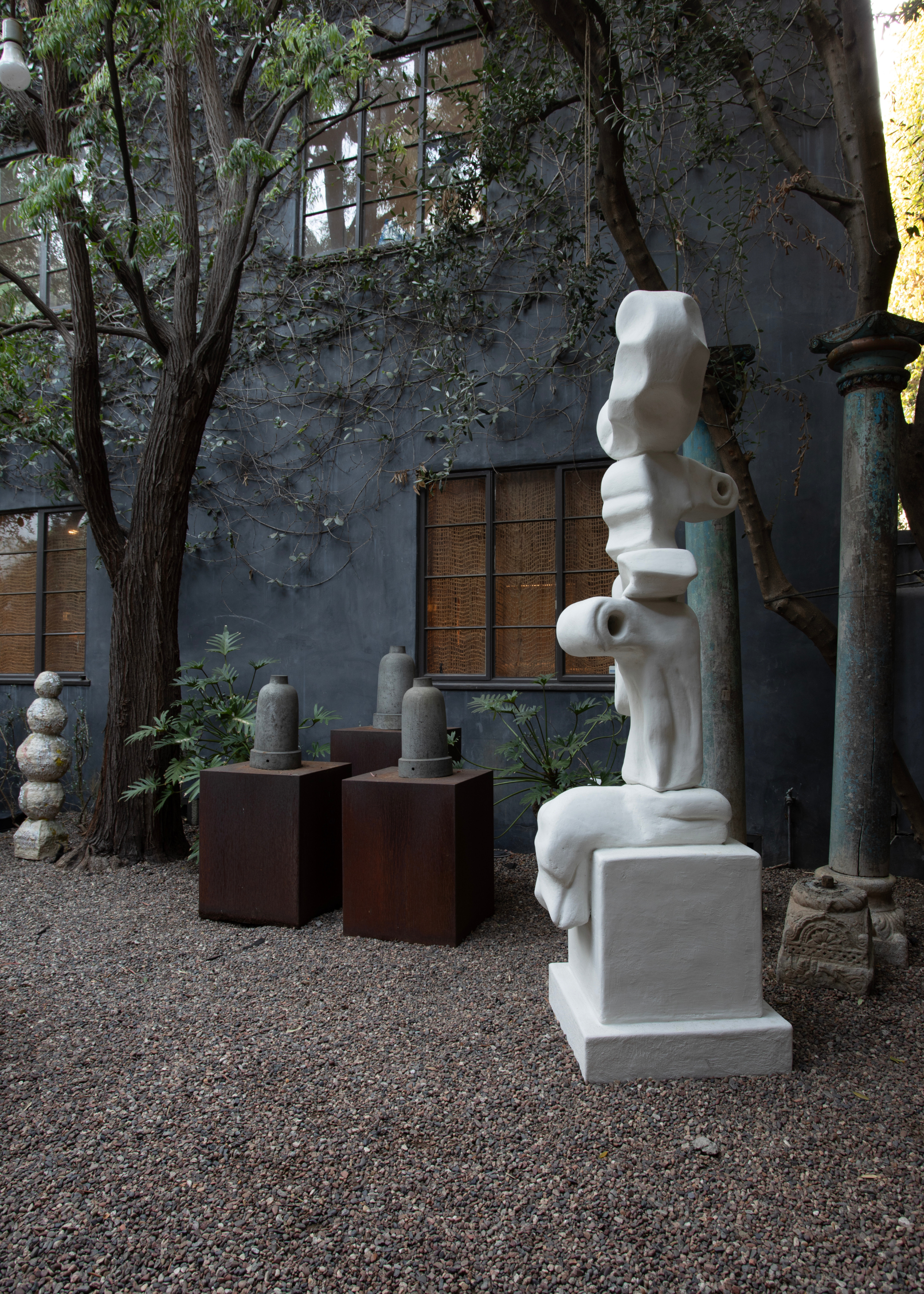
Even in urban courtyard gardens, sculptures can add a more romantic touch.
As much as the style of sculpture you select can impact the look of your garden, so can how you place it.
"Placement is everything," Shelley explains. "Sculptures should feel like part of the landscape, rather than impose on it. Nestling them within planting can soften their presence and help them settle."
Slotting your sculpture into the larger landscape of your garden and making sure it feels in some way connected to the surrounding nature will make for a more integrated, natural look.
"Pay close attention to scale and proportion — it should relate to its surroundings and choose finishes or tones that echo the wider garden," says Shelley, "Framing with foliage or positioning purposefully along a key sightline — such as a path or architectural axis. If viewable from the house, the sculpture can be appreciated all the more, even in the depths of winter – a wash of light can make all the difference in the dark."
Considering the angles from which your sculpture will be most visible is also a helpful tool when designing your garden. Think about how it will be framed, or obstructed, by surrounding foliage. A poorly placed piece of art loses so much of its effectiveness and appeal among your landscaping ideas, it's a disservice to the sculpture you have so lovingly and carefully selected.
"Both placement and choice are critical and require thoughtful consideration of scale, light, and sightlines. This is as much an art as the sculpture itself," says Katrien.
However, once placed, a sculpture can be difficult to move around, so ensuring you've selected the right position on the first time round will make your life easier in the long run. One of the best ways to ensure you've chosen the right spot is by using a mock-up sculpture first.
As Joseph Richardson, from Richardson Associates Landscape Architecture suggests. "It's always recommended to build a life-size mock-up of the sculpture you're looking to incorporate into a landscape. The mock-up could be made out of cardboard, construction paper, poster board, or even plywood."
This extra step doesn't have to cost a lot, but it can make all the difference in the final design of your garden.
"Sculptures are expensive, so building a life-size mock-up and moving it around the yard can help determine the right surrounding materials such as lighting, plantings, and even hardscape," he continues, saying, "Once we have an idea of where we are looking to place a sculpture in a yard, we'll have the lighting team look at various ways to light the sculpture, and then the landscape design team will look at the scale of the plantings around it."
This can also help you determine the best sightlines in your garden, so you can place your sculpture accordingly.
"When incorporating a sculpture into a space, you will want to consider sightlines. Both the views from the house as well as the views from the surrounding outdoor spaces," Joseph says, "A lot of times, we'll shift those mock-ups around the property and have homeowners or members of the design team sit in different spaces to determine which location works best."
The Best Materials for Garden Sculptures
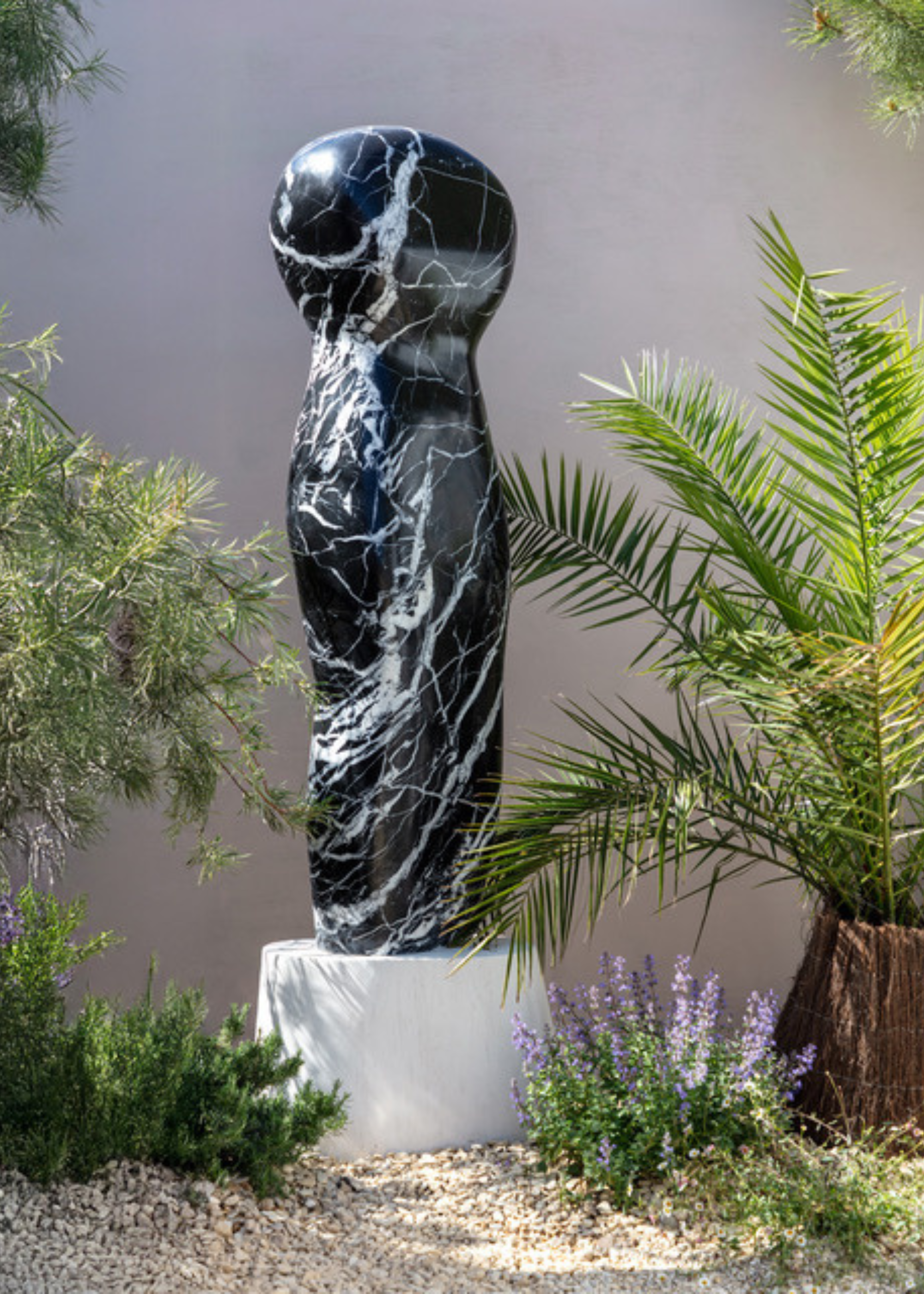
Natural stones, like marble, are both beautiful and durable.
Unfortunately, not all materials are created equally when it comes to outdoor use. The constant exposure to the elements can result in rusting and erosion with less appropriate materials, so it's important to consider which outdoor materials will last the longest.
"Durable materials are key for outdoor sculptures," notes Katrien, "Metals, stone, concrete, ceramics, and fiberglass all hold up well and can develop a beautiful patina over time. These materials are suited to withstand the elements and age gracefully."
Few materials are entirely impervious to endless exposure to the elements, so choosing ones that age with grace and beauty is the best way to select a material.
"We tend to favour materials that age gracefully and can endure outdoor conditions — bronze, steel, natural stone, seasoned woods like oak or cedar, we have also specified ceramic and wire," says Shelley, "Materials that develop character over time. We generally avoid lightweight resins or finishes that can fade or peel. Investing in materials that gain patina rather than degrade is advisable when outdoors."
Art advisor Kelly Cahn says, "I’ve worked on installations with bronze, cast iron, and aluminum and I’ve seen works installed made out of stone," however, she continues, "I’d be wary of untreated metals, which can corrode over time and stain their bases. If the work is painted, keep in mind that it will likely need to be repainted every so often."
Katrien agrees, saying, "Avoid materials that are likely to deteriorate or fade, such as soft woods, softer metals, and low-quality resins. Regardless of material, any garden sculpture will require ongoing maintenance to keep it in its best form."
Making a Sculpture the Highlight of Your Garden
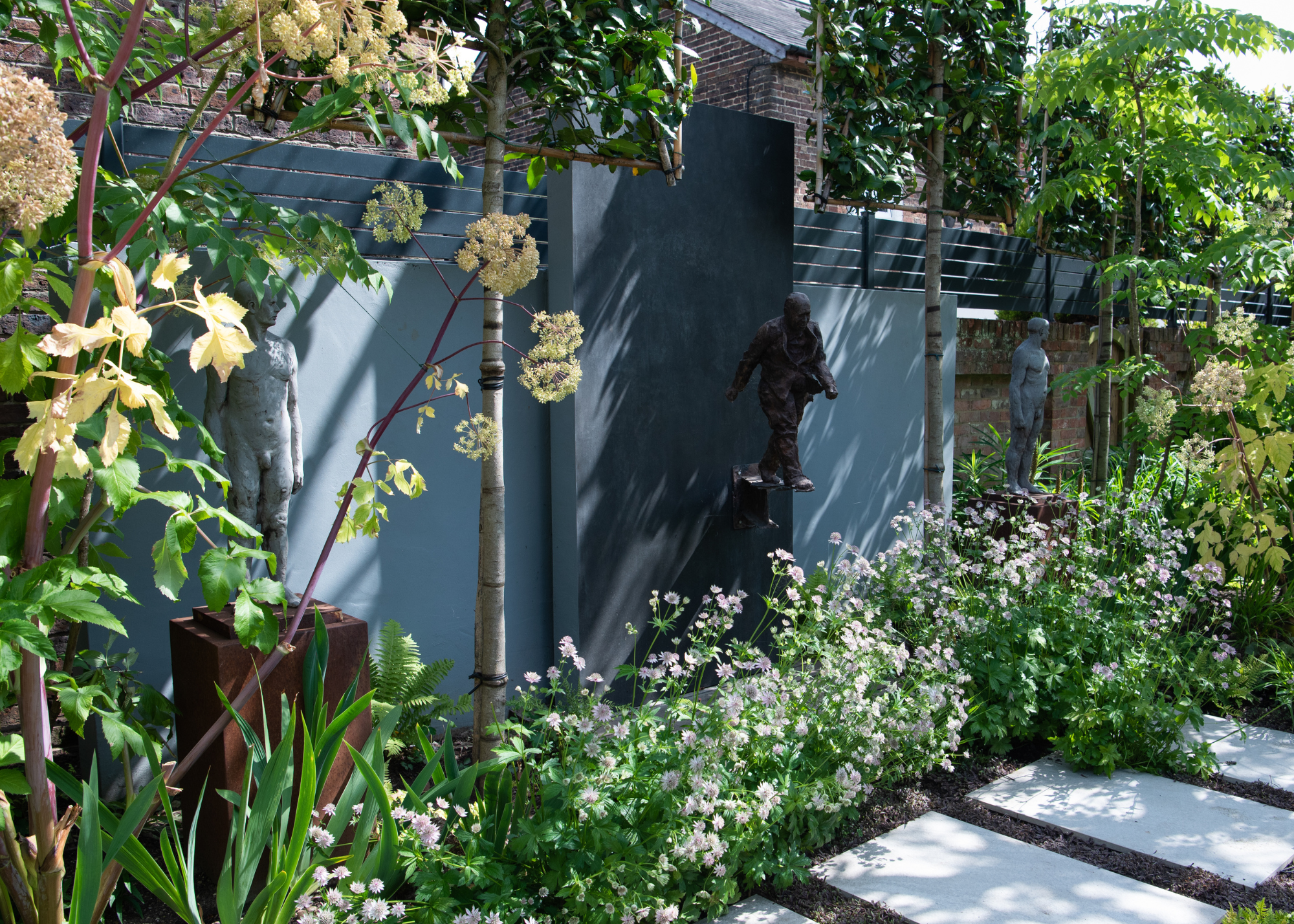
Three, evenly spaced sculptures make for a striking triptych.
While we love the way a sculpture looks when subtly integrated within the design, there's something special about putting the art front and centre, and letting your garden sculpture become the highlight of your outdoor space.
The first stage in achieving this is ensuring your sculpture is representative of your style and the feeling you're trying to create in your garden.
"Start by finding the sculpture that sets the tone you want to convey, whether it's peaceful, powerful, or some other feeling," says sculptor Kevin Caron, "The Internet is a helpful place to get an idea of what kind of work is available and what 'speaks' to you. Once you have your centerpiece, you can begin planning your planting."
Once you've chosen your ideal sculpture, it's time to consider where it should be placed.
"Start with the sculpture’s placement — it should be visible from multiple angles, unblocked by plantings, and given room to breathe, " says Katrien.
"A sculpture can serve as a showstopper or a moment of surprise, depending on how it’s positioned. Once placed, design the landscape to respond to the sculpture," she continues, "Choose plantings that complement its form, texture, or tone. Use elevation if needed to give it prominence within the landscape. The goal is to maximize the sculpture’s intention while creating a cohesive and engaging environment."
The plants you select should feel complementary to your sculpture; the way the foliage looks against the material and form of your art will add more depth to your design.
As Shelley says, "Let the sculpture lead, start with the sculpture as your anchor, then use structure and planting to subtly guide the eye toward it. Keep nearby planting lower to avoid obscuring it and to create a balanced composition around it, the use of complementary taller layers of planting can then be used as you move further away from it," she continues, suggesting, "Use symmetry or strong lines to reinforce its prominence, hard landscaping or plinths can create a deliberate sense of drama or enhance the sense of gravitas. Garden lighting can enhance its form at night, where the shadow play is just as effective as the light source. Or simply let the sculpture breathe — space around it adds drama and emphasis."
There are so many elements that should be considered when designing a garden around a piece of art, from texture, to color to form, it will all come together for a cohesive, multi-dimensional design.
"With some sculptures, you want the surrounding plantings to be minimal, while with others, you want the sculpture to be part of the landscape. For example, we recently installed a sculpture of flying ducks into a landscape on the shore of Maryland, and we wanted it to look as though the ducks were flying out of the landscape, so the sculpture is surrounded by flying grasses that provide movement to the space," says Joseph.
"Sculpture can add a surprising element to a space, whether it's delight or peaceful feelings," says Kevin, "Sculpture can also add sound, movement, and color that complements or coordinates its surroundings."
Another beautiful alternative to a garden sculpture is a clever, privacy-making water feature.
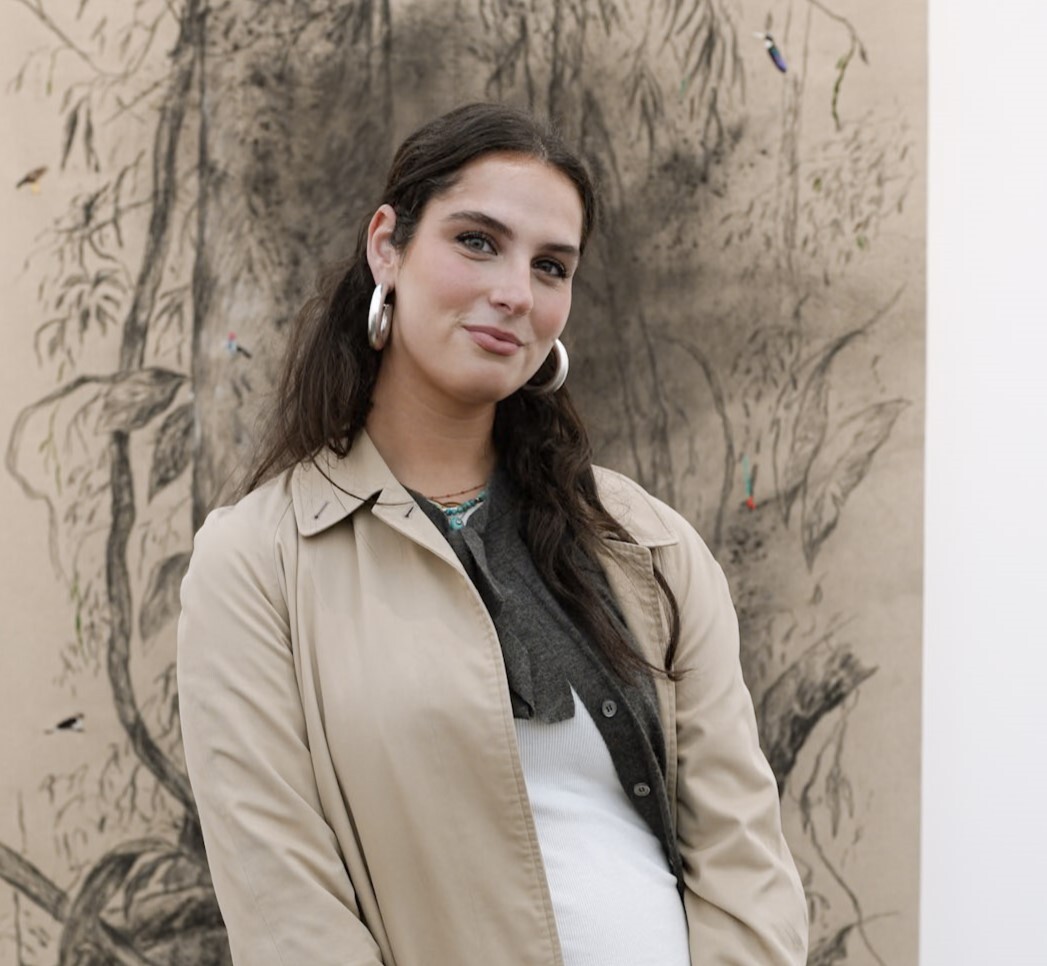
Maya Glantz is a Design Writer at Livingetc, covering all things bathrooms and kitchens. Her background in Art History informed her love of the aesthetic world, and she believes in the importance of finding beauty in the everyday. She recently graduated from City University with a Masters Degree in Magazine Journalism, during which she gained experience writing for various publications, including the Evening Standard. A lover of mid-century style, she can be found endlessly adding to her dream home Pinterest board.